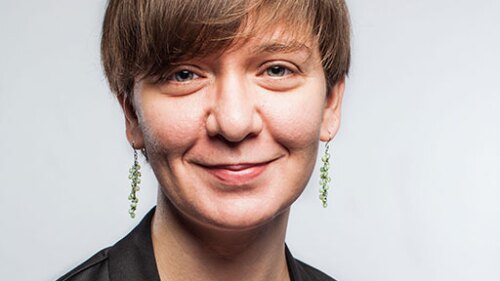![IMG_2896[1].JPG](https://cdn-ul.uli.org/dims4/default/68e7676/2147483647/strip/true/crop/4032x3024+0+0/resize/1440x1080!/quality/90/?url=https%3A%2F%2Fk2-prod-uli.s3.us-east-1.amazonaws.com%2Fbrightspot%2F80%2F39%2F205699104776b5d89f410b5cd438%2Fimg-28961.JPG)
Abby Newsham, ULI Kansas City District Council TAP Advisor; Will Herbig, senior director, ULI Homeless to Housed; Lisa Norris, ULI Baltimore executive director; Sarah Joyce, ULI Terwilliger Center associate; Dianne Burnette, vice president, ULI District Councils; Karen Kotowski, vice president, ULI District Councils; Aletha Dunston, ULI executive vice president; Gina Allen, ULI director; Fabiola Yurcisin, ULI Director; Catherine Rollins, ULI Boston director; and Michelle Landers, ULI Boston Executive Director, at ULI headquarters in Washington, D.C.
The setup is printed on the game board: “The empty piece of land was previously occupied by a large shopping mall. After years of decline, the mall was eventually closed and left abandoned. Its closure created a clean slate—free of historical preservation concerns and extensive land remediation—offering a blank canvas for the future development of this community.”
The board displays a variety of possibilities: public buildings, townhouses, a cozy restaurant, an elementary school, and green spaces with significant potential. Single-family homes are located on the western side of the board; along Oak Avenue are a transportation node and a business district.
The game, based on real-world pro formas, leads players to explore the various impacts of different housing types, from single-family and duplex homes to four- and five-story multifamily structures.
Homeward gamers play in teams and draw social, spatial, sustainability, and mobility goal cards that dictate, for example, whether a hypothetical development needs to be net zero or how much parking it requires. It resembles UrbanPlan, an interactive simulation that teaches participants the trade-offs in development, but is a less lengthy experience that focuses on affordable housing and targets the type of community member who would be likely to show up to a public meeting.
Michelle Landers, executive director of ULI Boston, said the game has “been in development for about a year, spanning two fiscal years. With our first round of funding, we created a request for proposals (RFP). We hired Stantec, a major UrbanPlan sponsor in Boston, to create a game focused on the trade-offs in a suburban context. They subcontracted Play the City from the Netherlands, known for developing urban planning games.”
Over the past year, the team worked through various scenarios with member leadership and reached this version of the game. They developed the game board; an Excel-based, simplified pro forma worksheet; game cards; and multiple variations of gameplay. “One key focus was to condense the time commitment, making it accessible. We love UrbanPlan, [but] it can be challenging to get people to commit to four, six, or eight hours for a full workshop. This game is designed to be played and to have a debrief or case study follow-up [in] two hours or less.”
In February, the team conducted pilot games in Boston with participants from the Harvard Graduate School of Design and local public sector members.
This year, the ULI Boston team has focused on finalizing the game rules and testing them as part of the pilot. “The next phase is to update the rules, incorporate funding mechanisms, and integrate feedback we received from the pilots,” Landers said. “In a perfect world, we hope to launch version 2.0 this fall.”
Future changes are anticipated, with a strong desire to expand this initiative to other district councils, thanks to significant interest. A new pilot program is scheduled for next week with about 40 participants from various community groups. Universities have also expressed interest in integrating the program into their curricula.
As for how the rules might change, future teams will receive “disruptor” cards midway through the game that inject real-world challenges, such as new ordinances that affect their pro forma.
A suburban context
Homeward was developed in Boston with a focus on Massachusetts, which ranks as the third-most expensive area in the country for housing and has a goal of 222,000 more homes by 2035 to meet growing demand. According to Catherine Rollins, ULI Boston director, housing attainability has been a priority under the leadership of District Council Chair Sandi Silk over the last three years.
Rollins emphasized the importance of creating something additive and unique in the New England market, rather than something duplicative of UrbanPlan. “Boston, along with Washington, D.C., is fortunate to have incredible nonprofits working on housing at every level—affordable housing, supportive housing, and so on,” she said.
The tallest buildings in the game are five stories, making it more relatable to those suburban areas outside major city centers. “This approach is especially relevant for much of the country, including suburbs around Boston, where we face significant community opposition to new housing and strong local control over development,” Rollins noted.
“We want participants to explore trade-offs,” she explained. “They need to consider economic, spatial, social, and mobility impacts and understand how these factors work together—or do not. It’s essential to think about how all these elements influence one another and affect the community.”
To demonstrate viability, players must meet three different thresholds: generate $400,000 in municipal tax revenue within one year, achieve at least a 10 percent return on cost, and build a minimum of 100 housing units. Once a project is deemed viable, teams can negotiate with one another to swap goals, which involves adjusting data in spreadsheets to evaluate how the new goals and solutions align financially.
In the final step of the game, players name their developments and make a presentation to the other teams.
Interested in supporting Homeward as it moves to its next stage of development? Reach out to Catherine Rollins at ULI Boston/New England via [email protected] for more information about sponsorship opportunities.








